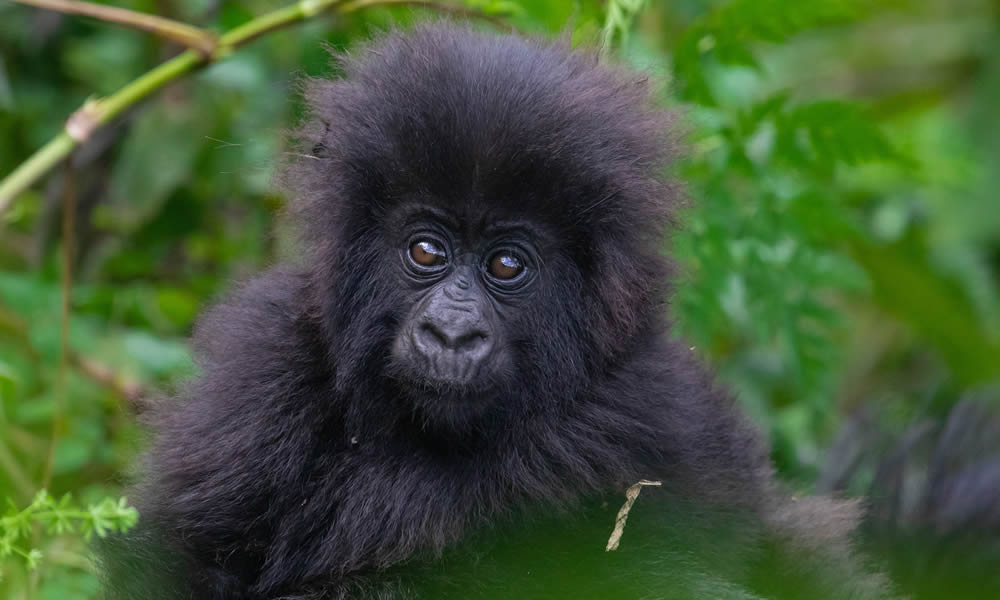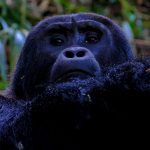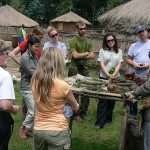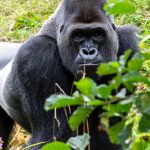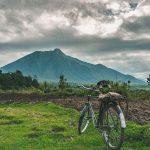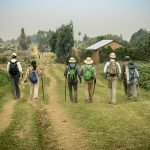Where to find Mountain Gorillas in Rwanda; Rwanda, often referred to as the “Land of a Thousand Hills,” is renowned for its stunning landscapes, diverse wildlife, and commitment to conservation. One of its most iconic and treasured species is the mountain gorilla (Gorilla beringei beringei), a critically endangered subspecies of gorilla. These majestic creatures find their habitat in the Virunga, a volcanic mountain range spanning the borders of Rwanda, Uganda, and the Democratic Republic of the Congo.
Volcanoes National Park in Rwanda is a haven for critically endangered mountain gorillas. Its breathtaking landscapes and rich biodiversity make it an essential destination for wildlife enthusiasts and conservationists alike. Volcanoes National Park, or “Parc National des Volcans” in French, is a protected area located in northwestern Rwanda. It is part of the Virunga Massif, and its lush and misty forests are home to a significant portion of the world’s mountain gorilla population. The park spans approximately 160 square kilometers and offers sanctuary to a plethora of other wildlife species.
Volcanoes National Park is situated near the border with Uganda and the Democratic Republic of Congo, making it a key area for the conservation of mountain gorillas in the region. It consists of five primary volcanoes: Karisimbi, Bisoke, Sabyinyo, Gahinga, and Muhabura. These volcanic peaks contribute to the stunning landscape of the park and create a unique environment that supports the mountain gorillas’ habitat.
The park’s altitudinal range, which extends from 2,400 to 4,507 meters above sea level, offers a variety of ecological zones that mountain gorillas inhabit. These zones include bamboo forests, Hagenia forests, and montane forests. Mountain gorillas are highly adapted to these diverse habitats, and their presence is closely linked to the vegetation and climate. The cool, misty environment of the highland forests provides the perfect conditions for the mountain gorillas‘ survival.
Rwanda, in general, and Volcanoes National Park, in particular, have played a pivotal role in the conservation of mountain gorillas. The population of mountain gorillas in Rwanda has been steadily increasing over the past few decades, thanks to the rigorous conservation efforts led by organizations such as the Dian Fossey Gorilla Fund and the Rwanda Development Board. The successful coexistence of mountain gorillas and humans is primarily attributed to Rwanda’s sustainable tourism model. In recent years, gorilla trekking has become a significant source of revenue for both the national park and local communities. Tourists from around the world visit Volcanoes National Park to experience the thrill of encountering these gentle giants in their natural habitat. The revenue generated from tourism not only supports conservation efforts but also benefits the local communities, fostering a sense of responsibility and ownership in the preservation of the gorillas.
In conclusion, the park’s dedication to protecting these iconic creatures, coupled with its sustainable tourism initiatives, has not only led to the recovery of the mountain gorilla population but also serves as a model for responsible conservation practices. The commitment to preserving this remarkable species and its habitat in Rwanda continues to be an inspiring example for the world. Mountain gorillas are not just found in Rwanda; they are cherished and safeguarded there, ensuring their survival for generations to come.
